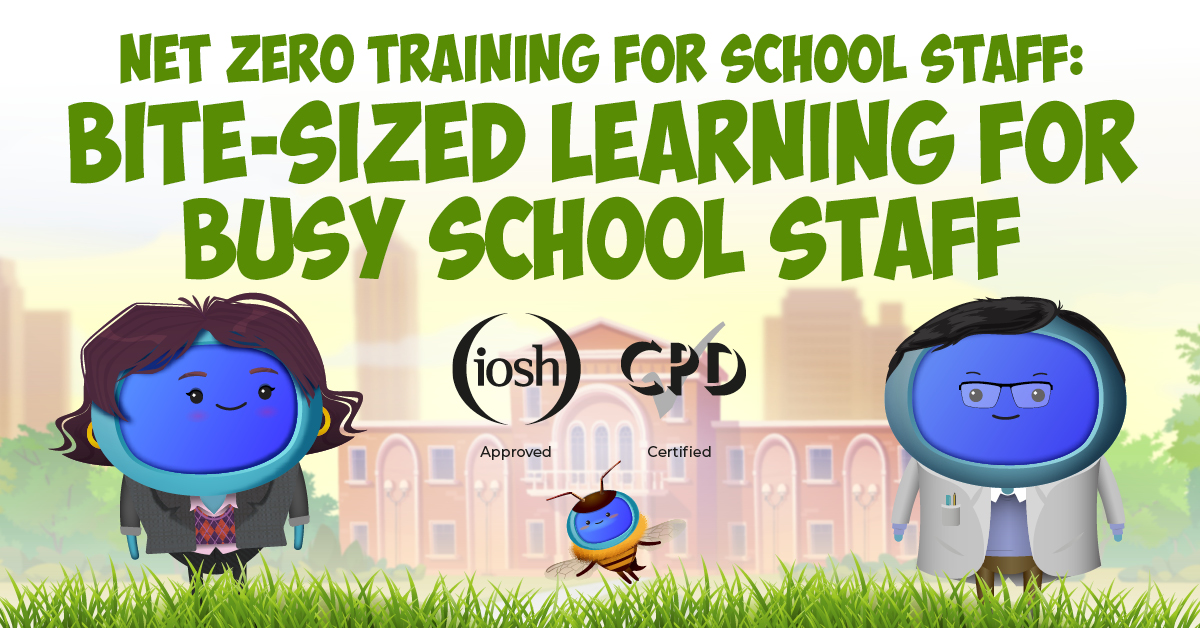As the education sector continues to evolve, schools must adapt to meet the needs of their students.
One critical component of any school's success is its estate vision and strategy. A school estate vision and strategy help create a learning environment that meets the needs of students and attracts new ones. However, developing such a thing for the school estate can be viewed as a daunting task, especially if you don't know where to start.
This blog will take you through the essential steps that you need to follow to create a comprehensive and impactful school estate vision and strategy. Whether you're a school leader, a trustee, or a site manager looking to take an active role in moving your school to the next level, read on to learn how to develop such a powerful school document.
Understanding the importance of school estate vision and strategy
A school estate vision and strategy are essential components of any school's success. A school estate vision provides a clear direction for the school's estate, while the strategy outlines how the school will achieve its vision. Without a clear estate vision and strategy, a school may struggle to meet the needs of its pupils and in the long run, this might also affect its ability to attract new ones.
A vision and strategy for the school estate also provide a framework for decision-making. When faced with a choice, a school can refer to its strategic roadmap to determine which option best aligns with its goals. This ensures that all decisions are made with the school's long-term success in mind.
Finally, setting an estates vision and clear strategy to get there can help a school secure funding from a variety of sources. By outlining a clear plan for the estate, a school can demonstrate that it has a well-defined direction and knows how to achieve its goals. This can make it easier for the school to secure the funding it needs to make its vision a reality.
Step 1: Assessing your current school estate
You first need to assess your current school estate. This involves taking stock of your existing facilities, identifying any areas that need improvement, and evaluating how well your estate meets the needs of your pupils.
One way to assess your current school estate is to conduct a site survey. You may say that you have had the Department for Education’s own CDC reports done, or that you have had an independent condition report survey carried out, but these only go so far. You know your school building better than anyone, so only you can walk around your school and note down any issues or areas that might need not only repairs but also strategic improvements. For example, is the layout safe and secure enough - such as poorly lit areas, or are there any areas where it might be easy for unauthorised individuals to gain access?
You should also talk to teachers, pupils, governors, parents, and any other stakeholders to get their input on the school's estate. You will be surprised how a quick 10-question survey can help you identify any areas that may be overlooked during your site survey.
Another way to assess your current school estate is to evaluate how well it meets the needs of your pupils. This involves looking at how your estate supports learning and how it can be improved to better meet the needs of your students. For example, you should read our recent article on how to increase pupil attainment by simply changing your lighting or even just upping the ante on planned and reactive maintenance.
Step 2: Identifying your future needs
Once you have assessed your current school estate, you can begin to identify your future needs. This involves looking at how your school's estate needs may change in the coming years and how you can prepare for these changes.
One way to identify your future needs is to look at your school's educational strategic plans. This should outline your school's goals and objectives for the coming years, including any plans to expand or change your estate. You should also consider any external factors that may impact your school's estate needs, such as any anticipated changes in enrolment or new/upcoming government guidelines.
Another way to identify your future needs is to look at trends in education and facility design. You can do this by subscribing to some great content providers to send you regular updates like School Property Matters or even us! Why not also make a point of visiting some of the conferences that focus on estates management in schools like Education Estates? This can help you anticipate how your school's estate needs may change in the future and how you can prepare for these changes. For example, you may need to create more flexible spaces to accommodate changes in teaching methods or incorporate sustainable design principles to reduce your school's environmental impact.
Step 3: Setting your school estate vision
Once you have assessed your current school estate and identified your future needs, you can begin to set your school estate vision. This involves defining your school's long-term goals for its estate and creating a clear direction for future development.
When setting your school estate vision try to bring your key stakeholders along with you in the process. This can include teachers, pupils, parents, and other members of the school community.
By involving stakeholders, you can ensure that your vision aligns with the needs and values of your school community. You might also want to look at best practices in education and facility design. This can help you create a vision that is innovative, forward-thinking, and aligned with the latest trends in education.
TO CONFIRM - when developing your school estate vision, you should clearly define:
- Your educational aims and objectives
- Your long-term goals and objectives
- The future needs of your pupils, teachers, and staff
- The expected changes in technology and teaching methods
You are creating a clear plan for the future of your school estate and so you need to ensure that it is aligned with your educational aims and objectives.
Step 4: Developing your school estate strategy
Once you have set your school estate vision, you can begin to develop your school estate strategy. This involves creating a plan for how you will achieve your vision and outlining the steps you need to take to make it a reality.
One way to develop your school estate strategy is to break it down into smaller, more manageable tasks. The key takeaway here is that this process is a marathon, not a sprint. Breaking it down helps you prioritise your goals and create a roadmap for achieving them. You should also consider any resource constraints, such as funding or staff availability when developing your strategy.
There is no reason not to think big, but it is important that you are realistic in your approach to establishing your school strategy. That said, even though you might think that you do not have the budget to deliver most of the things you put forward for consideration, do your research as you will be amazed by what you can uncover in the wider estates and facilities management sectors and how things might not be as expensive as you think.
Due to the long-term nature of delivering a strategy, you should consider that you might have moved on before this estate strategy reaches its conclusion, so it cannot be emphasised enough that you need to involve other stakeholders in this development process. Not only can it help ensure that your strategy is aligned with the needs and values of your school community and help build buy-in for your plan, but importantly you have a group of people that can continue in its overarching mission to achieve the outcomes desired.
Step 5: Implementing and reviewing your school estate plan
Once you have developed your school estate plan, you can begin to implement it. This involves putting your plan into action and making any necessary changes along the way.
One way to implement your school estate plan is to create a project management framework. This can help you track progress, identify any issues that arise, and adjust as needed. You should also communicate regularly with stakeholders to keep them informed about progress and any changes to the plan.
Another way to implement your school estate plan is to conduct regular reviews. This involves evaluating your progress and identifying any areas that need improvement. By conducting regular reviews, you can ensure that your plan stays on track and that you are making progress towards your goals.
Example guidance
There are many successful examples of schools that have developed impactful estate vision and strategy plans. If you are interested in learning more about what an effective strategy for schools might look like, you may want to check out the Good Estates Management for Schools Guide, and their Strategic Estates Documents download which provides support on developing and implementing an estate management strategy that meets the needs of pupils and staff.
Common pitfalls to avoid
Developing a school estate vision and strategy can be a complex process, and there are several common pitfalls to avoid.
- Developing a plan that is too ambitious or unrealistic: This can lead to frustration and disappointment when the plan is not achieved.
- Not involving stakeholders in the process: This can lead to a lack of buy-in for the plan and can make it difficult to implement successfully.
- Failing to review and adjust the plan as necessary: This can lead to the plan becoming outdated or irrelevant, which can hinder progress towards achieving the school's goals.
Resources to help you
Developing a school estate vision and strategy can be a challenging task, but there are several resources available to help. The Department for Education has published the Good Estates Management for Schools guide, which provides guidance on developing school estate strategies, including templates and examples.
Beyond the DfE is The Association for Learning Environments who also provide resources for school leaders looking to develop impactful school estate vision and strategy plans. Whilst this might be an international association you can dig out some informative content including webinars, white papers, and case studies of successful plans.
In summary
Developing an impactful school estate vision and strategy is an essential component of any school's success. By following the essential steps outlined in this article, you can create a comprehensive plan that meets the needs of your pupils and helps your school achieve its goals.
Remember to involve stakeholders in the process, break the plan down into manageable tasks, and review and adjust the plan regularly. By having a well-crafted plan, your school has the potential to establish a learning environment that not only caters to the diverse needs of its pupils but also stands out as a beacon in the field of school estates.
Find out more about iAM Compliant
Want to learn more about how iAM Compliant works and our award-winning compliance and estates management tools? Why not take a FREE 30-day trial to try it for yourself or book a demo with the team and we'll be happy to talk you through how our online tool can help you!



